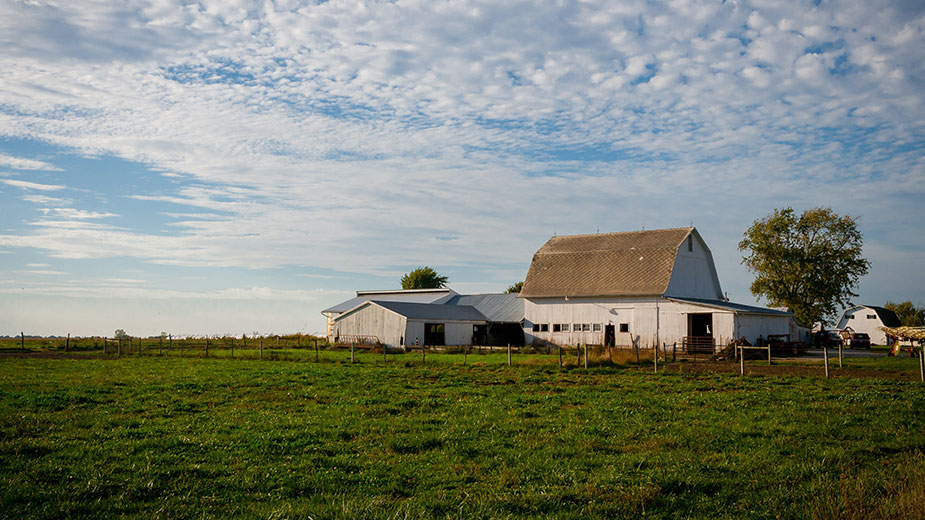There’s No Longer One Rural America – Could There Be Five?
By Jeff Grabmeier, Ohio State News
COLUMBUS, Ohio – While people often talk about “rural America” as if it describes just one way of living, a new study identified five different types of rural communities in Ohio.
The list includes farming areas that many imagine to be stereotypically rural, but researchers also found communities of the rural poor and booming small towns attracting affluent young adults from nearby cities.
Three of the five types of rural communities were found near the outskirts of major metropolitan areas.
“The line between urban and rural areas is getting blurred and very dynamic,” said Darla Munroe, co-author of the study and professor of geography at The Ohio State University.
“We are seeing a rural America these days that encompasses different types of people who are making homes there for very different reasons.”
While the study was done in Ohio, Munroe said she believes most states have a variety of different types of rural communities, even if the types aren’t all the same as what the researchers found in Ohio.
The study was led by Sohyun Park, a PhD graduate of Ohio State, with geography doctoral student Rebecca Chapman as another co-author. The study was published online recently in the Journal of Land Use Science.
The researchers analyzed data on migration between census tracts in Ohio, comparing tracts in 2008 and 2016 to see who had moved within the state during that time. They analyzed only the 566,608 households that moved either to or from a rural census tract within the state.
Households were categorized by income and age group.
Combining the household moves within the state between 2008 and 2016, the results showed that rural census tracts as a whole experienced a positive net migration of 1.2%, while metropolitan urban and smaller cities lost households.
Migration either from or to rural areas accounted for 27.4% of the total household movement within the state.
“Rural census tracts close to large metro areas overwhelmingly added new people, while other remote rural areas had only slight gains or lost residents,” Munroe said.
The analysis showed communities could be separated into five types, based on similar migration patterns. The first three clusters were all found near metropolitan areas:
Urbanizing rural had the highest gains of new households, receiving mostly high-income and young adults coming from metro suburban areas. “These are mainly small towns that experienced booms when a number of high-income households moved in, creating a new, larger core community,” Munroe said.
Suburban middle-income destinations attracted young people from nearby metro areas. Unlike the urbanizing rural group, they were more spread out over an area, she said. “They are living in these far-flung areas where their school is here, the job is over there, and the shopping is someplace completely different. They do a lot of commuting.”
Rural low-income destinations had the highest gains among low-income and older households. They attracted residents from both the nearby metro areas and other rural areas. “These are people going where they can find jobs and affordable housing,” Munroe said. “These census tracts are isolated from nearby affluent urbanizing areas.”
The remaining two types of communities were farther away from cities:
Stable rural areas typically had small increases in residents moving in and were generally associated with farming or rural industrial corridors.
The stagnating rural areas were clustered in the Appalachian region in the southeastern part of the state. These are often in forested and mining areas with little farming. “This is where rural exodus takes place, with people generally moving to other rural areas to find opportunities,” she said.
Overall, the results showed two related trends, Munroe said. First was the greater variation among rural regions, showing that rural America is no longer a monolith.
But at the same time, each type of rural community was attracting the same kind of people, becoming less diverse.
“We have more different kinds of communities in rural areas, but internally they are becoming more uniform,” she said.
Munroe said one thing to be concerned about is how these trends will impact land use.
“If we care about preservation of agricultural land and forested land, we should be paying attention,” she said.
The gap between rich and poor at the rural level leaves questions about whether some communities have resources to steward the land.
“We need to think about what land and management policies might be needed to preserve agricultural and forested landscapes in the state,” Munroe said.
Pictured: A farm in Mansfield, Ohio. Photo by Mark Stebnicki from Pexels
Published by The Business Journal, Youngstown, Ohio.



